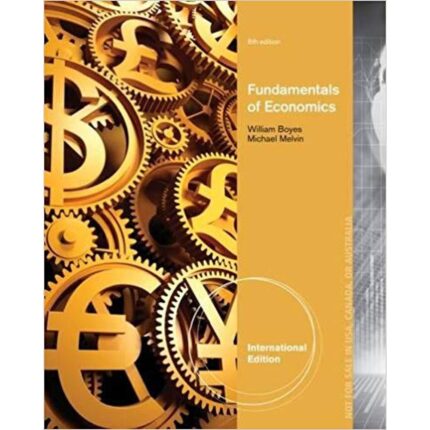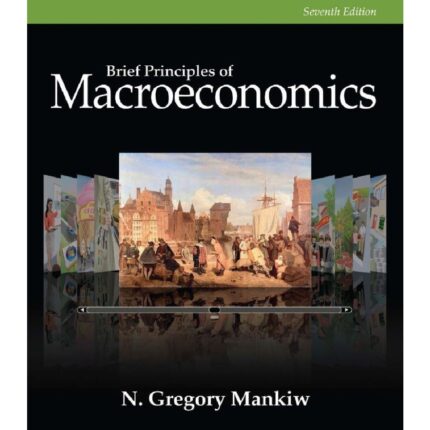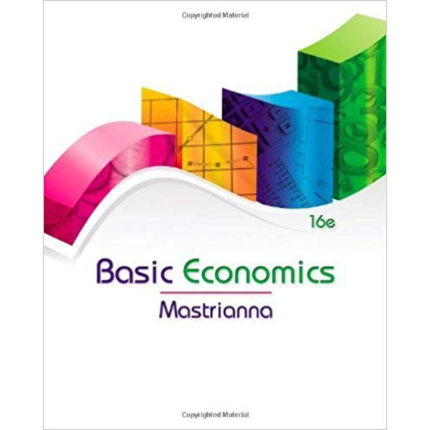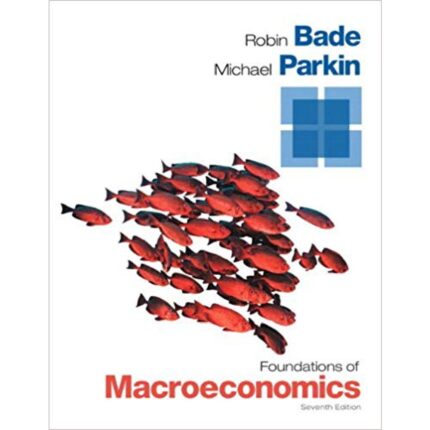1. In-Kind Transfers
a. Definition of in-kind transfers: transfers to the poor given in the form of goods and services rather than cash.
b. Because standard measurements of income inequality are based on a family’s money income, they do not take into account these in-kind transfers.
c. A study by the Census Bureau showed that, if in-kind transfers were included in money income at their market value, the number of families living in poverty would decline by about 10 percent.
2. The Economic Life Cycle
a. Definition of life cycle: the regular pattern of income variation over a person’s life.
b. Young workers typically have low incomes. Income rises as the worker matures and gains experience, peaks around age 50, and then declines until the worker retires at age 65.
c. People borrow and save to smooth out life-cycle changes in income. Borrowing often occurs when the individual is young, and most individuals save during middle age.
3. Transitory versus Permanent Income
a. Definition of permanent income: a person’s normal income.
b. To gauge inequality of living standards, the distribution of permanent income is more relevant than the distribution of annual income.
c. Because permanent income excludes transitory changes in income, permanent income is more equally distributed than is current income.
4. Case Study: Alternative Measures of Inequality
a. A 2008 study by economists at the Federal Reserve Bank of Dallas shows how different measures of inequality lead to dramatically different results.
b. Taking tax payments into account or examining consumption rather than income shows that inequality in the material standards of living is much smaller than inequality in annual income.
E. Economic Mobility
1. Economic mobility is the movement of people between income classes and occurs often in the U.S. economy.
2. Because economic mobility is great, many of those below the poverty line are there only temporarily.
3. Economists have found substantial mobility in terms of economic success from generation to generation.
4. The U.S. economy is filled with self-made millionaires. Approximately 80 percent of the millionaires in the United States made their money on their own as opposed to inheriting it.
II. The Political Philosophy of Redistributing Income
A. Utilitarianism
1. Definition of utilitarianism: the political philosophy according to which the government should choose policies to maximize the total utility of everyone in society.
2. Definition of utility: a measure of happiness or satisfaction.
3. The founders of utilitarianism are Jeremy Bentham and John Stuart Mill.
4. The utilitarian case for redistributing income is based on the assumption of diminishing marginal utility.
a. An extra dollar of income provides a poor person with more additional utility than an extra dollar would provide to a rich person.
b. As a person’s income rises, the extra satisfaction from an additional dollar of income declines.
5. However, utilitarians do not believe that all incomes should be equal.
a. Principle #3: People respond to incentives.
b. If all incomes were to be equalized, this would reduce the incentive to work hard. If individuals do not work as hard, total income falls, which lowers total utility.
c. Thus, in a utilitarian’s opinion, the government must balance the gains from greater equality against the losses caused by the distorted incentives.
B. Liberalism
1. Definition of liberalism: the political philosophy according to which the government should choose policies deemed to be just, as evaluated by an impartial observer behind a “veil of ignorance.”
2. This is a political philosophy developed by John Rawls.
3. Rawls considered what income distribution a person would consider just if that person did not know whether he or she would end up at the top, bottom, or in between.
a. Rawls believed that a person would be most concerned about being at the bottom of the income distribution.
b. Thus, public policy should aim to raise the welfare of the worst-off person in society.
c. Definition of the maximin criterion: the claim that the government should aim to maximize the well-being of the worst-off person in society.
d. This idea suggests that we should consider income redistribution as a form of social insurance.
e. Definition of social insurance: government policy aimed at protecting people against the risk of adverse events.
f. It is not clear that rational people would be so truly risk averse as to follow the maximin criterion. If a person were to treat all outcomes as equally likely, the best policy would be to maximize the average utility of the members of society (as suggested by utilitarianism).
C. Libertarianism
1. Definition of libertarianism: the political philosophy according to which the government should punish crimes and enforce voluntary agreements but not redistribute income.
2. Libertarians believe that society itself earns no income; only individual members of society earn income.
3. Libertarians also believe that the government should not take income from some individuals and give it to others to achieve any particular distribution of income.
4. Libertarians conclude that equality of opportunities is more important than equality of incomes. Thus, they believe that the government should enforce individual rights to ensure that everyone has an equal opportunity to make the most of his or her talents and achieve success.
III. Policies to Reduce Poverty
A. Minimum-Wage Laws
1. For workers with low levels of skill and experience, a high minimum wage forces the wage above equilibrium.
a. This leads to higher unemployment among those groups of workers affected by the minimum wage.
b. Although those workers who remain employed benefit from a higher wage, those who might have been employed at a lower wage are worse off.
2. The magnitude of the effect depends on the elasticity of labor demand.
a. If the demand for labor is elastic, firms will lower employment more than if the demand is inelastic.
b. This is especially true in the long run, when firms can adjust to the higher wage more fully.
3. Critics of the minimum wage also point out that many teenagers earning the minimum wage are from middle-class families, so that a high minimum wage does a bad job of targeting the poor.
B. Welfare
1. Definition of welfare: government programs that supplement the incomes of the needy.
2. Temporary Assistance for Needy Families (TANF) and Supplemental Security Income (SSI) are two welfare programs.
3. A common criticism of these programs is that they create incentives for people to become needy.
a. These programs may encourage families to break up, because many families qualify only if the father is absent.
b. These programs may also encourage illegitimate births, because many poor, single women qualify only if they have children.
4. Proponents argue that being a poor, single mother on welfare is not a life that someone would choose. Trends also indicate that, while the amount of welfare benefits (adjusted for inflation) has fallen since the 1970s, the percentage of children living with a single parent has risen.
5. The Earned Income Tax Credit works like a negative income tax for the working poor.
C. Negative Income Tax
1. Definition of negative income tax: a tax system that collects revenue from high-income households and gives subsidies to low-income households.
2. The only qualification required to receive assistance would be a low income.
a. A negative income tax does not encourage illegitimate births and the breakup of families.
b. A negative income tax would subsidize not only the unfortunate but also those who are simply lazy.
3. The Earned Income Tax Credit (EITC) works much like a negative income tax, but it applies only to the working poor.
D. In-Kind Transfers
1. The federal government provides the poor with food stamps and Medicaid.
2. Advocates of in-kind transfers argue that these make sure that the poor receive what they need most.
3. Advocates of cash payments argue that the government cannot know what goods and services the poor need the most.
E. Anti-Poverty Programs and Work Incentives
1. Many policies for the poor have the unintended effect of discouraging work.
a. A person discouraged from working loses the on-the-job training that a job might offer.
b. Children will not get to see their parents with a full-time job and this may impair their own ability to find and hold a job when they get older.
2. Welfare, Medicaid, food stamps, and the Earned Income Tax Credit all have eligibility requirements that are tied to income level.
a. As a family’s income rises, it becomes ineligible for these programs.
b. When all programs are taken into account, these families face marginal tax rates that are very high.
3. One possible solution would be to gradually phase out the benefits gradually as the family’s income level rises. However, this would raise the costs of these programs substantially.
4. In 1996, the government passed a welfare-reform law that limits the amount of time that any person can collect welfare.
E. In the News: International Differences in Income Redistribution
1. Many countries have more generous government programs to support the poor, but they also have very different tax systems.
2. This article from The New York Times states that while the tax system in the United States is already one of the most progressive in the developed world; it does not raise enough money to result in more equal distribution of income.
SOLUTIONS TO TEXT PROBLEMS:
Quick Quizzes
1. The poverty rate measures the percentage of the population whose family income falls below an absolute level called the poverty line. It tells you something about the distribution of income at the lower end of the income scale.
Three potential problems in interpreting the measured poverty rate are: (1) in-kind transfers are not accounted for in the poverty rate, so the poverty rate overstates the amount of poverty; (2) the poverty rate is based on annual income, but income over the life cycle is much more equally distributed than annual income; and (3) the poverty rate is affected by temporary changes in income, but would be better measured by looking at permanent income.
2. Based on the assumption of diminishing marginal utility of income, a utilitarian would favor some redistribution of income from Pam to Pauline because it would increase the total utility of society. A liberal would want to maximize the utility of the least well-off person in society, so a liberal would favor even greater redistribution. A libertarian would not want to redistribute income from Pam to Pauline as long as the process of earning income was a fair one.
3. Policies aimed at helping the poor include minimum-wage laws, welfare, a negative income tax, and in-kind transfers. Minimum-wage laws can help the working poor without any cost to the government but have the disadvantage of causing unemployment among some workers. Welfare assists the poor with direct aid but creates incentives for people to become needy. The negative income tax is a good way to implement a program of financial aid for the poor and does not distort incentives as much as some other programs do, but it may support those who are lazy and unwilling to work. In-kind transfers provide goods and services directly to the poor, ensuring that the poor get necessities such as food and shelter, but the government may not know what the poor need the most.
Questions for Review
1. The richest fifth of the U.S. population earns about twelve times as much income as the poorest fifth.
2. Over the past forty years, the income share of the richest fifth of the U.S. population has increased from 40.9 to 48.9 percent.
3. In the U.S. population, the groups most likely to live in poverty are blacks and Hispanics, children, and families headed by a female adult without a spouse present.
4. Because people may have temporarily high or low income and because income varies over the life cycle (people’s incomes are lower when young and higher when older), annual income does not represent true inequality in living standards.
5. A utilitarian would like everyone to have equal incomes, but would recognize that redistributing income distorts incentives, so would proceed only part way to that goal. A liberal would go further than a utilitarian in equalizing incomes, since a liberal would focus on the well-being of the worst-off person in society. A libertarian would not care about equalizing incomes at all as long as the process of getting income is fair.
6. In-kind transfers are beneficial because they ensure that the poor get what they need most. In particular, they get food and shelter instead of alcohol and drugs. But in-kind transfers are not as beneficial to the recipients as cash because they provide no opportunity for substitution into more highly valued goods. Advocates of cash argue that the poor are in the best position to know what they need.
7. Antipoverty programs can discourage the poor from working because they effectively tax away earnings by significantly reducing benefits when a person earns income. This disincentive could be reduced by reducing the benefits more gradually, but the program would be much more expensive.
Quick Check Multiple Choice
1. b
2. d
3. d
4. b
5. a
6. c













Reviews
There are no reviews yet.